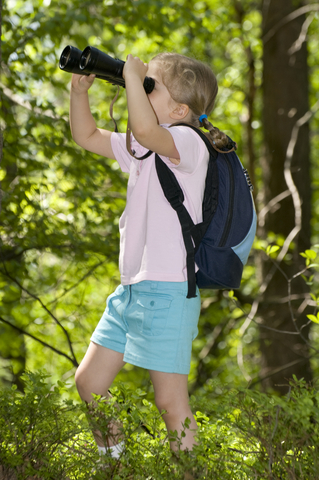
Treasure hunting, orienteering, puzzle solving, and building community. That’s questing. What a great way to create engaging & educational summer activities for children.
As I’ve been looking for summer activities that can spark a child’s imagination and turn into a child-lead summer project, my model has been the wonderful children’s summer activity book Weslandia. Mapmaking close to home is great for 3-6 year olds since it focuses on what they know.
Elementary age children, 6-11 years old, may be ready for activities with more planning, investigating, solving, and reporting. Depending on their age and interest, they may even be ready to try such activities on their own.
The Quest Tradition
Questing is a North American version of the British activity Letterboxing, which started in the 19th century. The steps are easy: put a weather-proof box in a public place then spread clues to potential finders. The box usually includes at least a notebook and a stamp. Finders will stamp their own notebooks and leave their personal stamp in the box notebook. It’s a fun way to create a subtle connection with others in or passing through a community.
Letterboxing itself has come to North America and the rest of the world, as have similar activities of geo-caching (using GPS) and questing.
Questing as it has developed is more about a community and sense of place education. The Valley Quest program in Vermont is a beautiful example of community-building and education through this long tradition of hunting for clues and connections. Over two decades, they have built a program that connects history, environment, education, and citizen engagement. It takes a long time and a lot of people to build questing into a community the way they have, but everyone starts small.
Everyone starts questing or letterboxing with a first treasure hunt.
The First Quest
You as the parent may have to set up the first quest or treasure hunt in order to give your child the experience of being the finder, or your child might enjoy creating a quest for others. It may help to have a group of neighbors, a play group, or a circle of friends who are interested in questing with you so you can try out one another’s quests.
Valley Quest have very easy to follow instructions for making a quest, making a simple quest journal (one for the quest box and one for each finder), and making a stamp (one for the box, one for the finder).
If you are ready to embrace questing, one book stands above all other resources: Questing: A Guide to Creating Community Treasure Hunts by Delia Clark and Steven Glazer. The foreword is written by David Sobel, whose Mapmaking with Children I’ve suggested often. Sobel writes about his own ten-year-old son exploring then returning to say:
I’m a good explorer because I really look at all the details, all the little places you can go, all the crannies you can find. I don’t just look at it and go, I spend a lot of time on it, make forts and stuff and traps.
Quests, he writes, are about getting into those crannies.
If your child becomes interested in questing, this could become a local movement. Questing can be a way to build a sense of place and draw closer to local history, environment, and people. The elements of mystery and suspense add to the fun.
Image © Pro777 | Dreamstime.com
